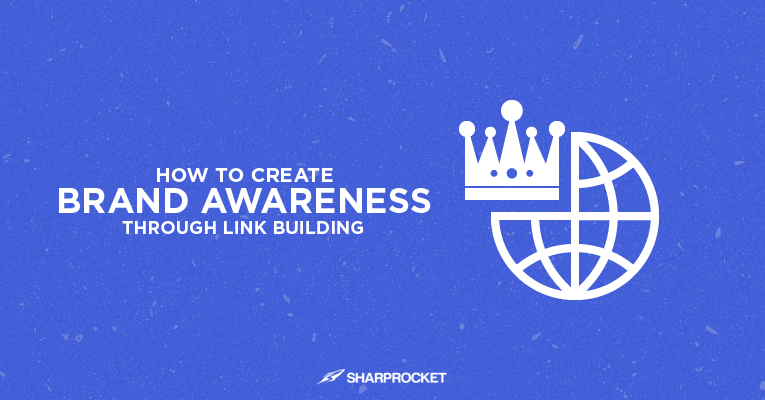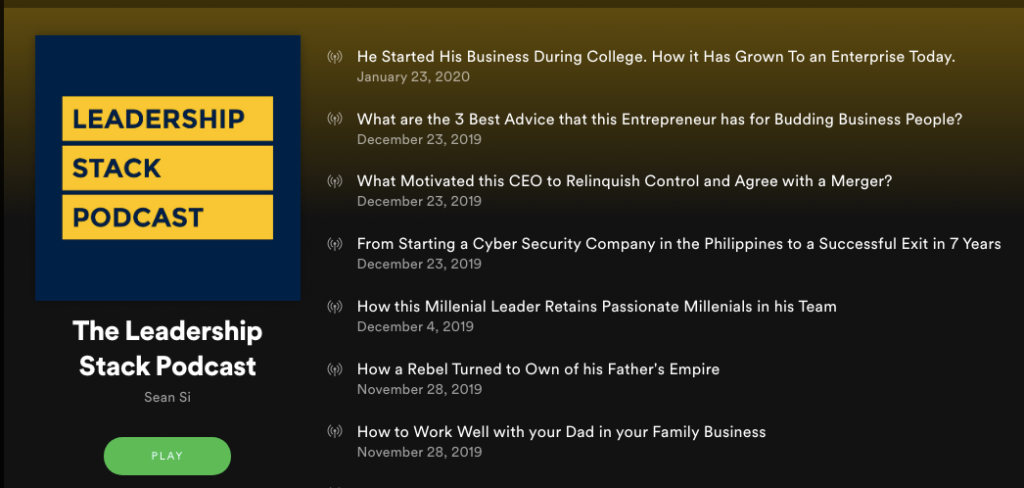by Venchito Tampon Jr | Last Updated on October 24, 2021
Brand building is the new link building.
Communicating your brand in a way that captures the attention of its target audience through quality content and community engagement.
You resist shortcuts and spammy link building tactics and focus more on thinking how your links can affect your brand value and brand equity.

What is Brand Awareness?
Brand awareness is the extent to which consumers are familiar with the distinctive qualities or image of a particular brand of goods or services.
Strategic link acquisition starts with identifying your brand’s distinctive qualities.
On unique value proposition
A unique value proposition plays an important role in how you deliver your content assets to its intended audience.
If you can discover what your brand differs from its competitors — may it be in the total brand scheme or purely for content sake, you can easily emphasize the uniqueness of your brand or your content in all of your external marketing efforts.
Given that potential linkers receive endless pitches from brands looking to get natural links from people’s blogs, linkers become more aware of what makes content on a particular topic unique and valuable.
They’ve seen different formats and styles of content for a particular topic. They knew what makes content different from others.
When you know your content’s value proposition, it would be simple for you to create brand awareness around it. As you know how to position it to people who are likely interested in sharing and linking it, as well as improve the entire content asset for better information and value.
Importance of Brand Awareness
Fosters trust
You don’t participate in any engagement of a brand if you don’t trust them at all.
The same is true in pursuing links through brand awareness.
When people become more aware of the caliber of your content and what your brand stands for, as far as disseminating information is a concern, you gain trust from publishers and other content creators in your space.
Positioning yourself in the market
Getting a market share in an industry, particularly if your brand is just starting out, is never easy.
There has to be a strategic approach in building the authority and positioning yourself in the market.
Link building helps your brand gain momentum, wherein organic links become easier as people are starting to recognize your content every now and then. They link to your content pieces naturally as you develop your expertise in the market. Brand awareness does that.
Develops association
In building awareness, you gain new contacts and networks you never knew in the first place.
These are brands and individuals who gained a good understanding of your brand.
The more you build brand awareness, the more you become associated with influential people in your space — which primarily helps in gaining more exposure and secondary benefits of backlinks, social shares, and brand mentions.
Resulting to brand loyalty
The law of momentum starts to kick in. As you create awareness around your brand, you earn interest from people through the quality of your products and through the value-adding information of your content marketing efforts.
When this happens, you position yourself in the market and attract customers who will repeatedly buy into what your brand offers. This results in building new sets of brand advocates — resulting now to brand loyalty.
How to Create Brand Awareness Through Link Building
1. Strengthen your brand ambassadors
People connect to individuals more than brands. Brands don’t have personalities unless a person or group of people from an organization speaks up — these are brand ambassadors.
In the idea of link building, brand ambassadors are people of a brand with a high level of expertise on topics they care about.
These are people who can go out and contribute something of value to the web community — may that be in a form of content, quality conversations on niche forums and community sites, and other initiatives that engages value.
Here are some brand ambassadors you can gain inspiration from:
Tim Soulo, Ahrefs – SEO Saas

Do you have to force your CEOs or founders to be brand ambassadors?
Definitely not. There are options you can choose:
- Opt to hire a thought leader in your space who can go on behalf of your brand — this could be an industry follower with existing huge following or someone starting out in the field but has extensive work experience.
- Start looking for someone who can build credibility through content contribution internally and externally of your brand assets (e.g. blog publications). It could be you or it is someone else.
Either you choose to hire an experienced influencer or build credibility for a potential brand ambassador. You need to strengthen him or her for more effective link building results.
How to build links by strengthening your brand ambassadors:
- Use expertise to build links. Learn how to use HARO and subscribe to the platform. Choose topics your brand ambassador has expertise in. Then deliver at best by answering questions with direct answers.
- If the brand ambassador is starting out, build his or her portfolio by contributing to mid-tier publishing websites, then go all the way up to niche high-end content publications
- Develop associations by engaging with past networks of friends with an online presence. Start sending emails or sharing their content on your social profiles to send radars on their signals that you’re into the same line of industry.
2. Organize or sponsor an event
Events are a great way to elevate your brand.
Organize a public event. Either you do it for your brand alone or hire subject experts in your space to speak about topics they care about. Align topics into one theme and start an event.
Glen Dimaandal, a local and international SEO speaker produced several events on his own — PeepCon and SearchWorks which have become locally known for bringing experts in the search marketing and digital marketing field.

How to build links by organizing or sponsoring events:
- Set a name for your public events to get brand recall — for your participants to quickly remember when they see your events on different web places.
- Get authority links from event syndication and distribution websites. All it needs are your event details.
- Incentivize bloggers and content creators who are participants of your events. This is to get natural event reviews and/or mentions on their blogs — when this primarily depends on the quality output of your event.
3. Maximize podcast opportunities
Podcasting is mainstream nowadays.
Any content creator in industries that I know is thinking of ways to penetrate podcasts: either to start their own podcast or become a guest.

If you’re trying to gain exposure by being guests on podcast shows, you can start reaching out to relevant podcasters.
I’ve covered the entire process of how to get podcasting link opportunities. But here are a few tips from the guide:
- Prospect for blogs hosting podcasts through discovery in iTunes search, Google search, and podcast directories.
- Organize your list with host/s name, contact details, and description of podcasts for easy customization of outreach emails.
- Choose a podcast show to pitch. Ask some assessment questions: Is this podcast providing external links to websites of guests on podcasts’ footnotes or transcripts? Is the show focuses on discussing narrow or broad subject matters — is it a fitting topic to our brand? Is there a substantial number of followers on social and networks that can help us create more brand awareness after podcast guests?
- Pitch to become an interview guest. Share your portfolio and details on why you deserve a slot. Don’t be too aggressive in followup emails. Here is a great post on how to send a follow-up email after no response.
Once you receive links to podcast interviews, start sharing it on your social profiles and to your email subscribers — to get a ripple effect of bringing in a new audience to podcaster’s following list, while at the same, create awareness about your brand.
4. Create tools for targeted audiences
Content that creates both interactive and learning experiences gets the most editorial links, in most cases.
Tools are an example of this type of content. It helps audiences to do or to learn something specific.
A few examples of tools that work are:
- email signature generators
- privacy policy generators
- SaaS metric calculators
- blog idea generators
- invoice generators
- SEO checkers
There are so many other examples. Think of ideas by discovering problems no one in your industry has solved yet, or if there is one solution that has some features not catering to solving those problems you’ve discovered — you can take advantage of that.
How to build links to helpful tools:
- Start including descriptive links in your external content (e.g. guest posts) that previews your tool, if it’s relevant to your post.
- Create short videos or how-to blog posts that showcase your tool. You can use Loom or Camtasia for video recording.
- Invest in community engagement by sharing a link to your tool page. You can exclusively give influencers in your industry early access to your tools. Exclusivity offers an advantage for more link opportunities.
5. Leverage influencer outreach
Start by reading why and how influencer outreach works in this guide.
Identify influencers who be will your key people of prospects for more brand awareness through link building.
How to make the most out of influencer marketing:
- Strengthen relationships with influencers, even if there are no opportunities for links. Don’t let “for just links” mindset get in your head every time you connect with influencers. Adapt the “law of reciprocity” by offering too much value to a person that it helps you get residual benefits in return.
- Look for upcoming influencers as they are most receptive to press and interview requests, even product reviews.
- Categorize influencers as micro and nano influencers — you can check out this guide on how to do it.
- Collaborate content with thought leader content creators. You get the benefit of association once you do that.
- Interview influencers on your media channels (Youtube or podcast sessions). Once they share it with their networks, you create more exposure to your brand.
Think Brand Building
Think of branding when doing link building.
Always go for long-term benefits and initiate massively for building your brand. Through brand awareness, you start positioning yourself (your brand) in a way that you earn trust, respect, and tangible benefits, such as links and social shares.
The Author
Venchito Tampon Jr
Venchito Tampon is a Filipino Motivational Speaker, Corporate Trainer, and a Leadership Speaker in the Philippines. He is the CEO and Co-Founder of SharpRocket, a link building agency. With a decade of experience, Venchito has a proven track record of leading hundreds of successful SEO (link builidng) campaigns across competitive industries like finance, B2B, legal, and SaaS. His expert advice as a link building expert has been featured in renowned publications such as Semrush, Ahrefs, Huffington Post and Forbes. He is also an international SEO spoken and has delivered talks in SEO Zraz, Asia Pacific Affiliate Summit in Singapore, and Search Marketing Summit in Sydney, Australia. Check out his other businesses, Hills & Valleys Cafe, Blend N Sips and Saas Pursuit.
How our LINK BUILDING AGENCY builds 250 links/mo consistently using Predictable Link Building Methodology™…
- Using a SIMPLE and PROVEN system
- Using a SCALABLE strategy
- No private blog networks
- No creepy outreach emails
